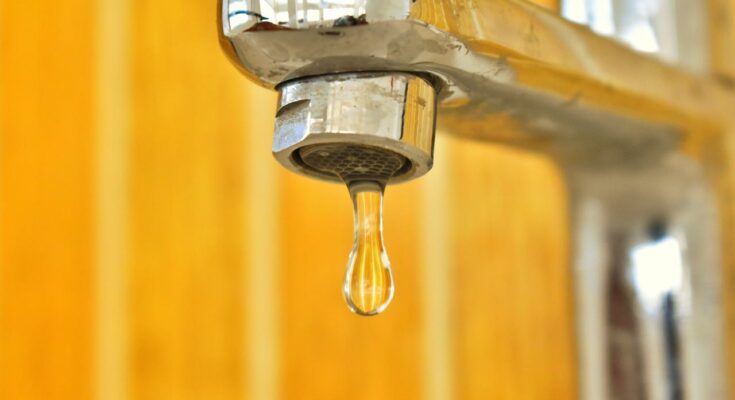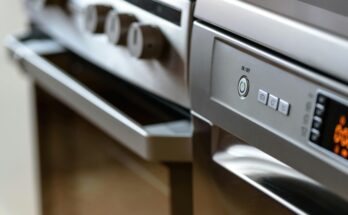Water is something we all use every day, but we often forget to appreciate it — until we see our water bill or hear about droughts in our communities. The reality is that the average American household wastes thousands of gallons of water each year without even realizing it. But the silver lining? Making an impact doesn’t mean you have to give up a lot. With just a few thoughtful changes and some handy water-saving gadgets, you can cut down on waste, lower your utility bills, and do your part for the environment.
In this guide, I’m going to share five straightforward and effective methods to save water in your home. We’ll cover everything from quick fixes you can do today to upgrades that will pay off for years to come. Whether you own your place and want to save some cash or just want to be more eco-friendly, these tips can help you make good use of every drop.
1. Fix Leaks Right Away – Those Drips Can Add Up:
It might be tempting to ignore that slow-dripping faucet or the tiny leak from your shower, but small leaks can waste a lot of water over time. In fact, the EPA says household leaks can waste nearly 10,000 gallons each year—enough to fill up a whole backyard pool! A toilet that leaks quietly can waste around 200 gallons a day—it’s a silent bill booster.
To get ahead of this, start by checking for leaks. One simple way is to look at your water meter. Just turn off all your water sources for two hours and check the meter again. If the numbers have changed, there’s probably a leak somewhere. You should also listen for the sound of running water when you haven’t turned on any taps.
Once you spot a leak, fixing it is usually pretty simple. For dripping faucets, replacing old washers or O-rings might do the trick. If your toilet is leaking, check the flapper valve—if it’s not sealing right, it’s cheap and easy to swap out. For a high-tech fix, think about getting a smart leak detector that pings your smartphone when something’s wrong.
Taking care of leaks quickly doesn’t just save water; it can also save you from bigger plumbing issues and costly repairs later on.
2. Upgrade Your Fixtures for Long-Lasting Savings:
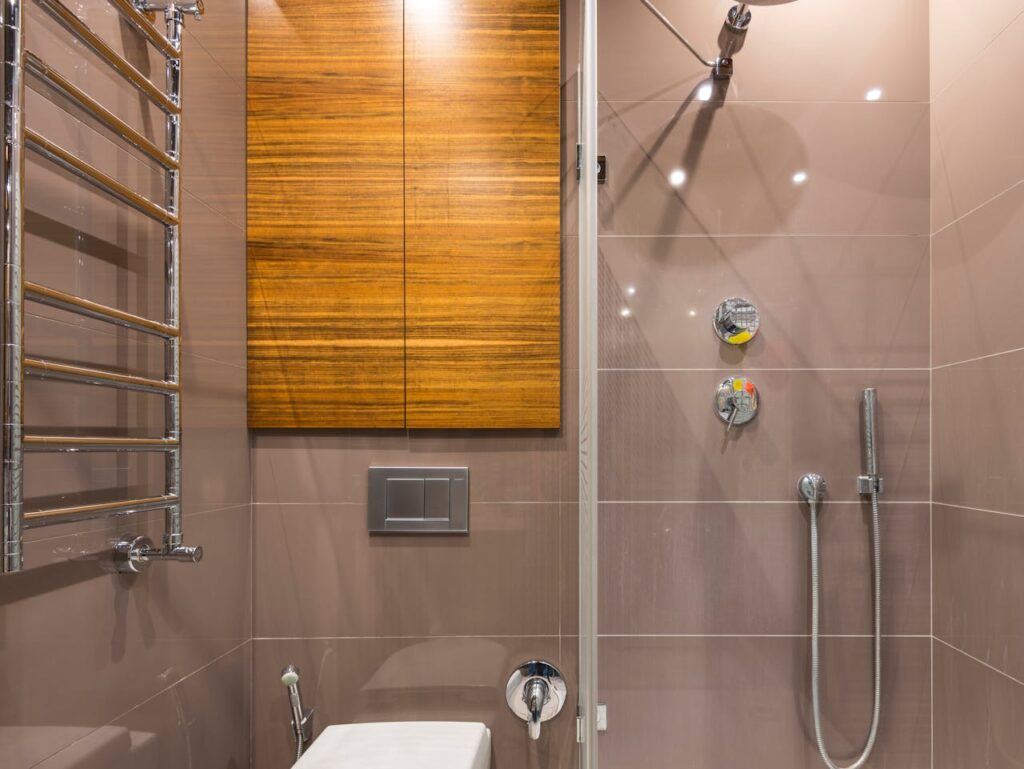
If you’re still using older faucets, showerheads, or toilets, chances are they’re guzzling water like there’s no tomorrow. Old fixtures waste a ton of water, but the fix is pretty straightforward: upgrade to newer, water-efficient models.
One of the easiest upgrades is to install a low-flow showerhead. These modern designs keep the water pressure strong while using 40-50% less water. Look for showerheads with the EPA’s WaterSense label—it means they’re both efficient and perform well. Similarly, aerated faucets mix air with water, reducing flow while still keeping them user-friendly—perfect for your kitchen or bathroom.
Toilets can be even bigger water hogs, especially old ones that use up to 6 gallons with each flush. Switching to a dual-flush toilet, which lets you choose a light flush for liquids and a heavier one for solids, or a high-efficiency toilet, can save you tons of water each year. If you’re not ready to buy a new one, you can use a toilet tank bank—a simple bag that reduces the amount of water used per flush.
While these upgrades might cost a bit upfront, the savings on your water bill will more than make up for it in the long run. Plus, check if your area has rebates for water-efficient fixtures—it could save you even more cash!
3. Be Smart with Outdoor Water Use:
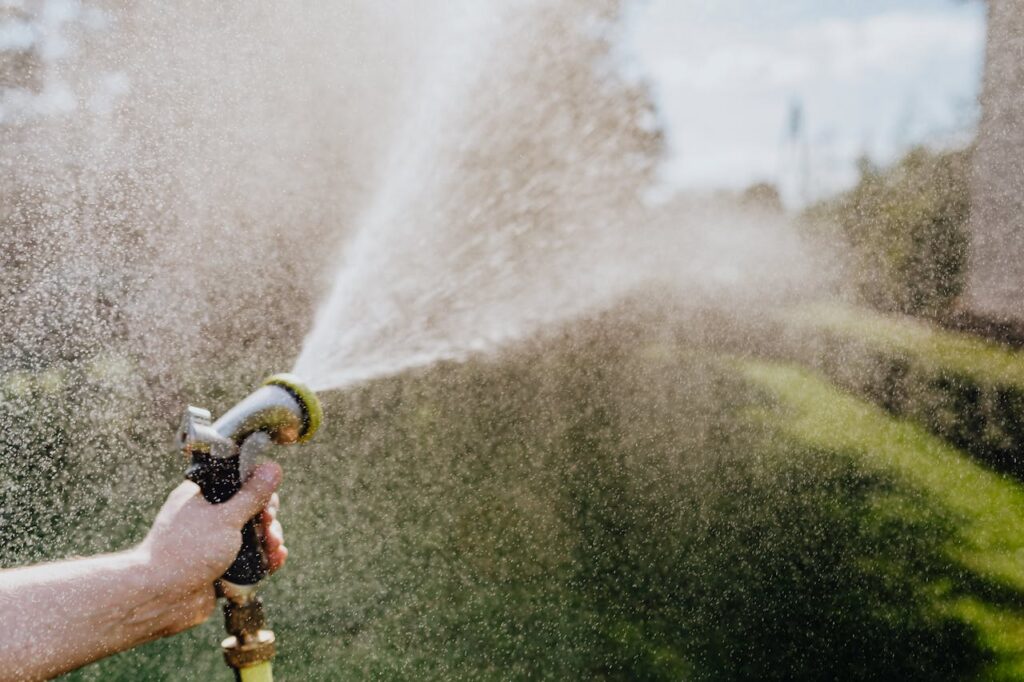
For a lot of homeowners, watering lawns and gardens takes a big chunk out of their water bill, especially if you live somewhere hot or dry. The good news? You can keep your yard looking nice while using way less water.
One great tip is to change when you water your plants. The best times are early morning or late evening. It’s cooler then, which means less water evaporates into the air, so more makes it to the plant roots. Steer clear of watering in the middle of the day when the sun is blazing—much of it will just evaporate before it even helps your plants.
Another great way to save water is to switch from traditional sprinklers to a drip irrigation system. Unlike sprinklers that spray all over (often onto sidewalks or driveways), drip systems deliver water right to the base of the plants, cutting down on waste. You could also get a smart sprinkler controller, which adjusts your watering based on the weather.
If you’re up for a bigger change, think about using drought-resistant landscaping instead of thirsty grass. Native plants, succulents, and xeriscaping can create a stunning outdoor space that needs way less water and care.
By trying out these outdoor water-saving strategies, you’re not just conserving water; you’re also creating a healthier, more eco-friendly yard.
4. Rethink How You Do Laundry and Dishes:
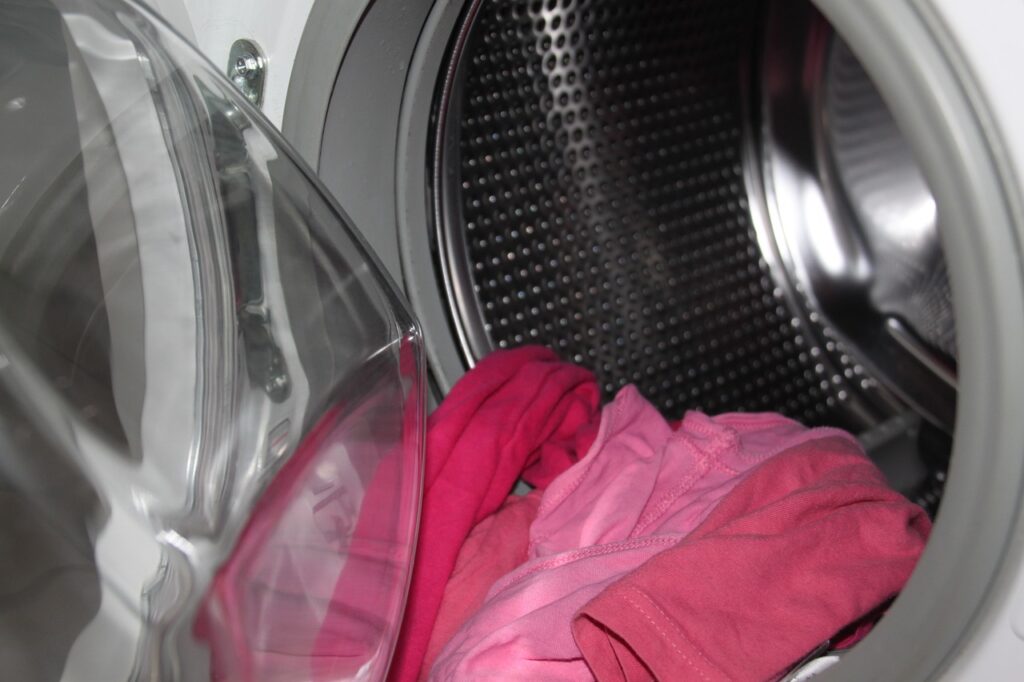
Appliances like washing machines and dishwashers make life easier, but they can waste tons of water if you’re not careful about how you use them. Luckily, a few small changes can lead to big savings.
When doing laundry, always wait until you have full loads. Running a half-empty machine wastes both water and energy! Plus, using cold water saves energy, which is great since heating water takes up a lot of a washing machine’s energy usage. It also helps keep your clothes looking nice!
If you’re considering a new washing machine, look for one with an ENERGY STAR label. These models use 25-50% less water than standard machines, which is a smart move for your wallet in the long run. Front-loading washers are particularly good because they use less water and get more moisture out, which means less time in the dryer.
For doing the dishes, the same rule applies: always run a full load. Many modern dishwashers don’t need you to pre-rinse them; just scrape off big food bits before loading. If your dishwasher has an eco-mode, use it to save even more water and energy.
Making these small tweaks not only helps save water at home but can also lower your energy bills—everyone wins!
5. Reuse and Repurpose Water When You Can:
One aspect of saving water that often gets overlooked is finding ways to reuse it creatively. Instead of letting perfectly good water go down the drain, think about how it can have a second purpose.
For example, when you’re waiting for your shower to warm up, put a bucket under the tap to catch the cold water. That water can be used for your houseplants, washing off patio furniture, or even filling up your pet’s water bowl. Leftover water from boiling pasta or veggies can cool down and then be used as a nutrient-rich fertilizer for your garden.
Another smart way to save water is by setting up a rain barrel in your yard. These catch runoff from your roof and can be super handy for watering plants or washing your car. Rain barrels are cheap and very effective, especially if you live somewhere that gets a good amount of rainfall.
Even simple things like keeping a pitcher of water in the fridge instead of running the tap until it’s cold can save a surprising amount over time. The trick is to be aware of times when you can reuse water instead of wasting it.
Final Thoughts: Every Drop Matters!
You don’t have to make huge changes to save water—just being a bit more aware and making small adjustments can really add up. Whether it’s fixing leaks, upgrading your fixtures, improving outdoor watering, adjusting how you use appliances, or reusing water, each of these steps brings you closer to an eco-friendlier home.
The best part? Many of these suggestions are easy, cost-effective, and there may even be financial incentives like rebates available to you. Plus, the savings on your water bill make all these changes worth it.

